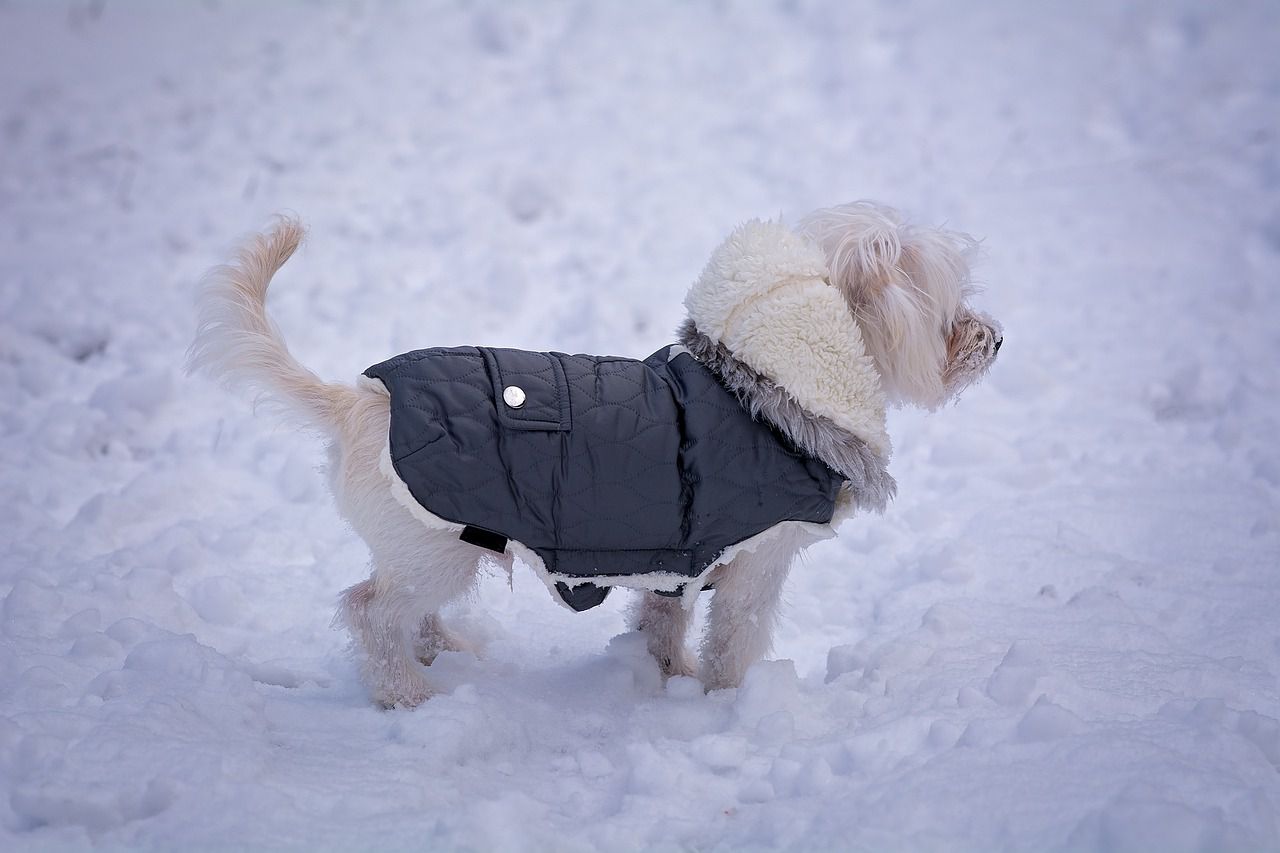Many dog breeds require dog clothes to stay warm and safe during cold and wet months.
While most dogs dislike clothes in general, some clothes can be actually inconvenient or even painful to wear.
Here's how you can understand that you should probably buy new clothes for your pet.
Constant Fidgeting
If your dog is continually fidgeting, adjusting, or trying to squirm out of the clothing, it's a clear sign of discomfort.
They might paw at the clothes or repeatedly rub against furniture to get rid of the garment.

Freezing or Stiff Posture
Some dogs may freeze in place when you put clothes on them. They might stand rigidly, refusing to move.
This stiffness in their posture is an indicator that they are not at ease.
Whining or Barking
Unusual vocalizations such as whining, whimpering, or barking can be a way for your dog to communicate their discomfort.
They may be trying to convey their unease with the clothing.
Excessive Panting or Drooling
If your dog starts panting heavily or drooling, even when it's not hot or they haven't been active, it may indicate that the clothing is making them too warm or anxious.
Licking or Chewing
Dogs may lick or chew at the clothes, particularly around the areas where the fabric touches their skin.
This behavior shows that they are trying to alleviate the discomfort.
Low Head Position
If your dog keeps their head lowered, it's a sign of submission or discomfort.
They may not feel at ease with the clothing and are expressing it through their body language.
Conclusion
To ensure your dog's comfort in clothes, start with short periods of wear, gradually increasing the time.
Choose soft, well-fitting outfits that do not constrict movement. Keep a close eye on their behavior and be responsive to their cues.
If you notice persistent signs of discomfort, it's best to remove the clothes and consider alternative ways to keep your pet warm or stylish while ensuring their well-being.









